Galaxy Note 20 Ultra vs Galaxy Z Fold 2: Which Samsung phone is for you?
Which high-priced big phone should you pick — the Galaxy Z Fold 2 or the Galaxy Note 20 Ultra?
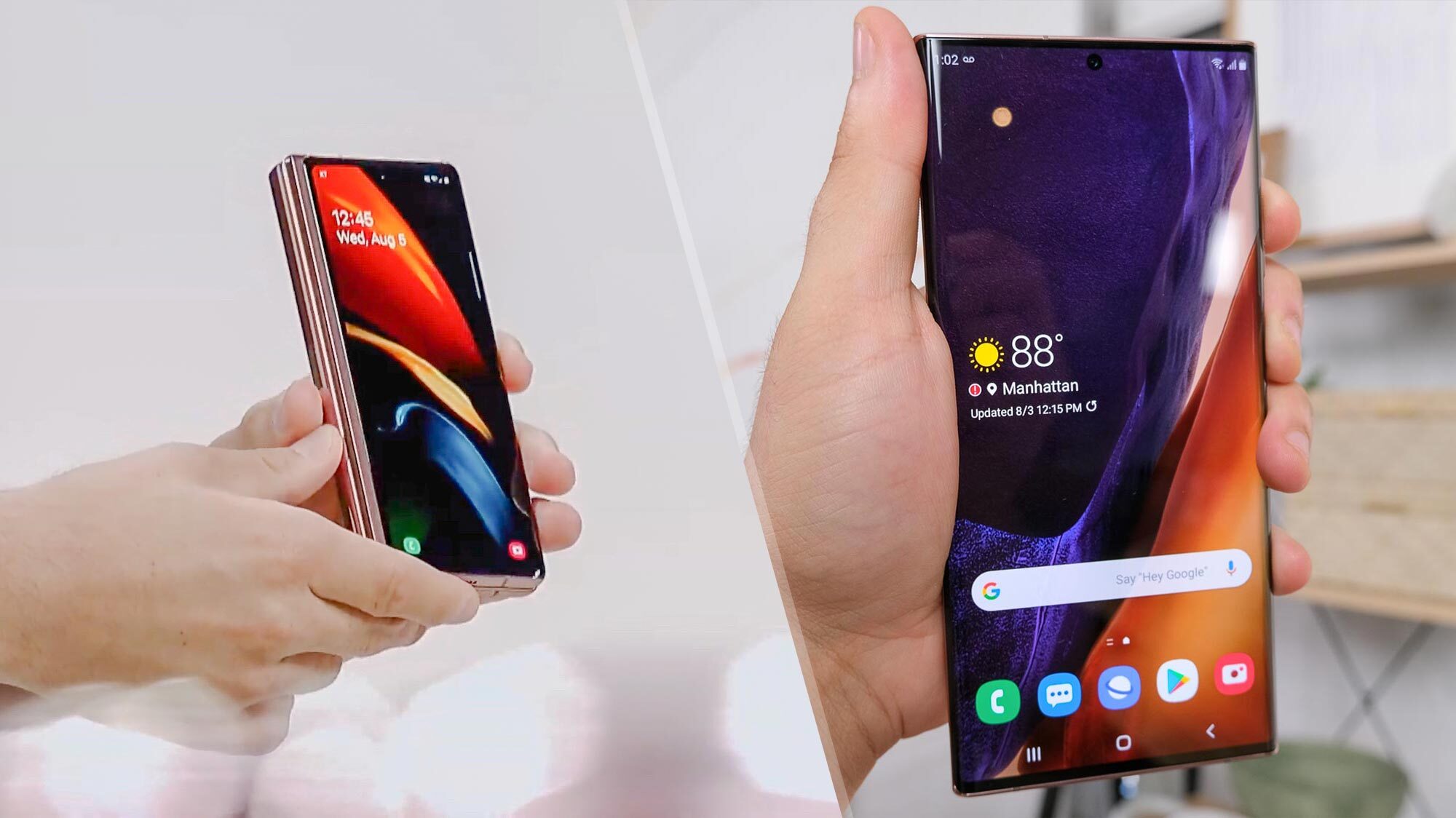
With the Samsung Galaxy Note 20 Ultra and the Galaxy Z Fold 2, Samsung has a pair of new phones that offer big screens and big prices to match.
The Note 20 Ultra is the latest version of Samsung's line of Galaxy Note phablets, equipped with the largest display Samsung's ever offered in a conventional smartphone. The Galaxy Z Fold 2 is anything but conventional — it's a foldable phone that follows up on last year's Galaxy Fold, with hopefully enough design improvements to avoid its predecessor's rocky launch.
- Best Samsung phones
- Choose the best new phablet: Galaxy Note 20 Ultra vs. Galaxy Note 20
If you've got $1,000 and change — lots and lots of change — to spend on a new handset, which of Samsung's two behemoths should you pick? In this Galaxy Z Fold 2 vs. Galaxy Note 20 Ultra face-off, we'll see how Samsung's big-screen devices compare.
Galaxy Note 20 Ultra vs Galaxy Z Fold 2 specs
| Header Cell - Column 0 | Samsung Galaxy Note 20 Ultra | Samsung Galaxy Z Fold 2 |
|---|---|---|
| Starting price | $1,299 | $1,999 |
| Display | 6.9-inch AMOLED (QHD; 120Hz) | 7.6-inch interior OLED (120Hz); 6.2 exterior OLED |
| Processor | Snapdragon 865 Plus | Snapdragon 865 Plus |
| RAM | 12GB | 12GB |
| Storage | 128GB, 512GB | 256GB |
| Rear cameras | 108MP wide; 12MP telephoto with 5x optical zoom; 12MP ultrawide | 12MP wide, 12MP ultra-wide, 12MP telephoto (2x optical, 10x digital zoom) |
| Front camera | 10MP | 10MP |
| Battery size | 4,500 mAh | 4,500 mAh |
| Battery life (Hrs:Mins) | 10:26 (7:59, 120Hz mode) | Not yet tested |
| Size | 6.48 x 3.04 x 0.32 inches | 6.2 x 2.6 x 0.66 inches (closed); 6.2 x 5 x 0.27 inches (open) |
| Weight | 7.33 ounces | 9.9 ounces |
Galaxy Note 20 Ultra vs Galaxy Z Fold 2: Price and availability
It's not every day that a $1,299 phone looks like the bargain buy, but welcome to the world of foldable phones. The Galaxy Z Fold 2 will cost $1,999 when it goes on sale Sept. 18, though anyone who bought the $1,980 Galaxy Fold can trade in that phone for an $800 credit. You can currently pre-order the Galaxy Z Fold 2. We have more information on how to pre-order the Galaxy Z Fold 2, including deals on offer from carriers and retailers.
Samsung's new foldable costs $700 more than the 128GB version of the Galaxy Note 20 Ultra. Up the storage to 512GB, and you're paying $1,449 — an eye-popping figure in most cases, but still $500 less than what the Galaxy Z Fold 2 costs.
Galaxy Note 20 Ultra vs Galaxy Z Fold 2: Design and display
A Galaxy Note 20 Ultra vs Galaxy Z Fold 2 comparison is really a face-off between a phone that embodies a more traditional design and a next-generation device. The Note 20 Ultra looks like a lot of other phones available on the market today, albeit with a much larger display than you'll find on most handsets.
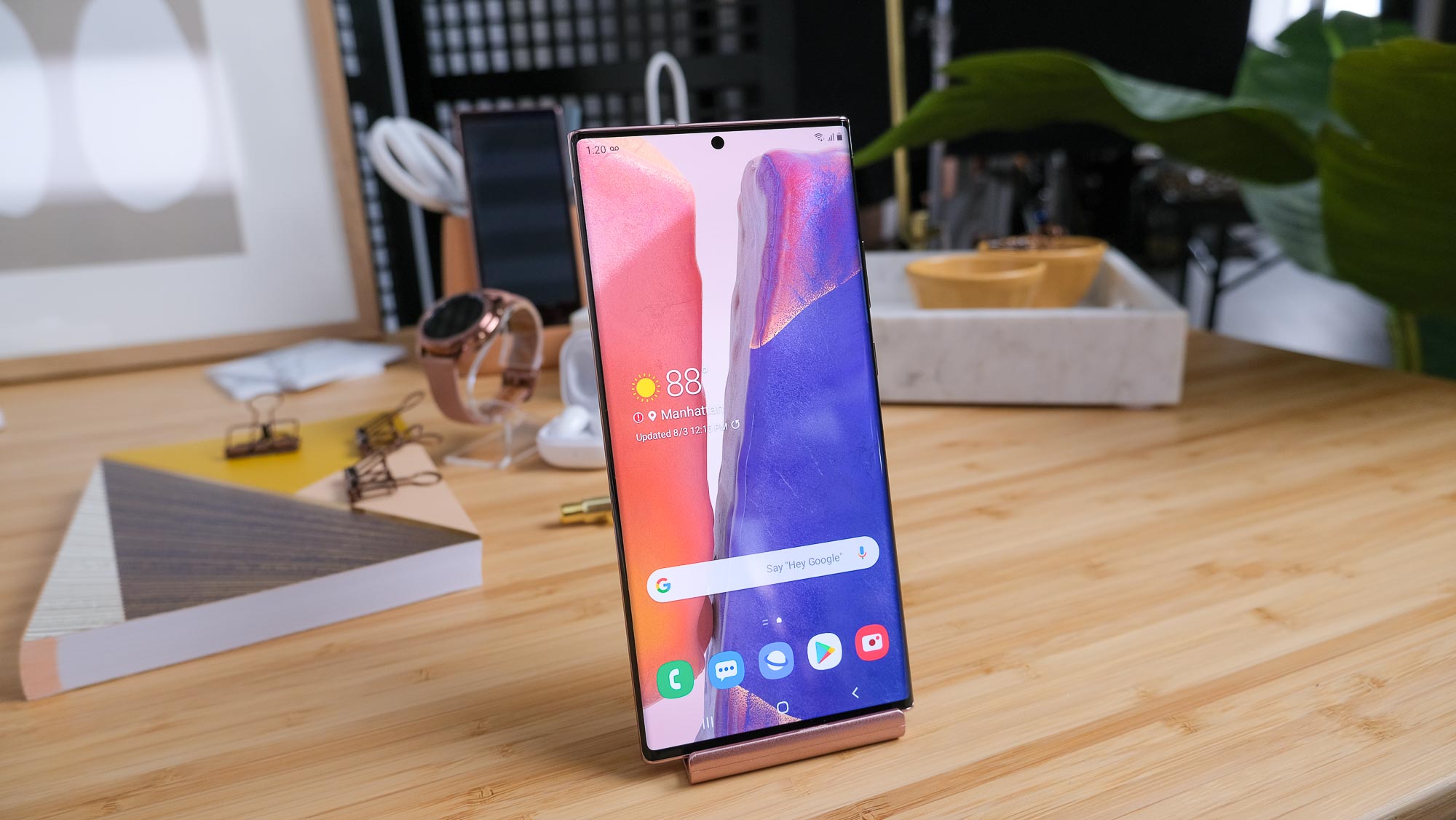
The Galaxy Z Fold 2 is big, too, but in a different way. When closed, it looks like two conventional phones stacked on top of each other. But unfold the device, and you open it up to a tablet-like screen. Because the new Fold does away with the notch that housed the front cameras in the original device, the interior display has grown to 7.6 inches. Meanwhile, there's also an outer display on the Fold 2 that you use when the phone is closed — it's now a cover display stretching for 6.2 inches, up from the 4.6-inch screen on the original Fold.
Get instant access to breaking news, the hottest reviews, great deals and helpful tips.
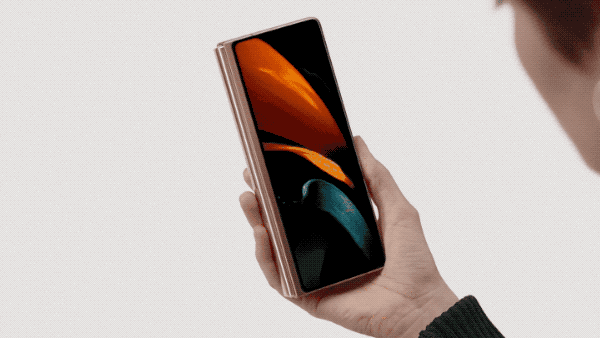
It isn't often that a Galaxy Note has the smaller screen of two devices, but that's the case here, at least when the Galaxy Z Fold 2 is opened. The Galaxy Note 20 Ultra has a 6.9-inch AMOLED display, but that's dwarfed by the 7.6-inch panel that opens and closes on the folding phone. For this version of the Fold, Samsung has included a layer of ultra thin glass to give the display a more polished feel. The Fold 2's hinge also allows its screen to open at different angles.

The highlight of the Galaxy Note 20 Ultra's display is a refresh rate that dynamically changes, scaling up to 120Hz when you're engaged in activities that would benefit from smoother scrolling in graphics. But the Galaxy Z Fold 2 adopts that feature as well, at least on its main display; the 6.2-inch cover display on the outside of the phone features a more conventional 60Hz refresh rate.
Galaxy Note 20 Ultra vs Galaxy Z Fold 2 cameras
When we tested the Galaxy Note 20 Ultra, we were pretty impressed with the cameras, particularly the 12MP telephoto lens that's part of the triple camera array on the back of the phablet. In addition to the telephoto lens, Samsung includes a 108MP main lens and 12MP ultra wide shooter. There's a laser autofocus sensor to help the main lens come into focus quickly, too.
But it's the telephoto lens that's the star of the show, and not just because of its 5x optical zoom. Even when you push beyond that, using digital zoom, the Galaxy Note 20 Ultra continues to deliver sharp images up to 20x. You can go up to 50x if you want, but images will get a little shaky at that point.

The Galaxy Z Fold 2's camera specs aren't nearly as impressive. The main lens is a 12MP sensor, and both the ultra wide and telephoto cameras are 12MP as well. That 12MP telephoto lens is capable of a 2x optical zoom and you can push things to 10x digitally if you want.

We'll have to put the Galaxy Z Fold 2's cameras to the test to see how they compare to what the Note 20 Ultra produces, but on paper at least, the phablet seems like a more capable camera phone than Samsung's foldable. That's not to say there aren't some features that will appeal to mobile shooters, though. Thanks to that hinge on the Galaxy Z Fold 2, you can turn half of the main screen into a view finder and lay the phone flat on a surface for some hands-free photography.
An even more useful camera feature with the Galaxy Z Fold 2 is the ability to use either the main screen or the exterior cover display as a view finder. That's helpful in letting subjects see how the photo will turn out, and it also lets you take selfies with the more powerful rear lenses on the Galaxy Z Fold 2, just by flipping the phone's screens around.

Speaking of selfies, there's a 10MP camera on the Galaxy Z Fold 2's main screen, housed inside a punch-hole cutout. That's exactly the same as the selfie cam on the Galaxy Note 20 Ultra.
Galaxy Note 2 Ultra vs Galaxy Z Fold 2: Specs and performance
We wouldn't expect to see much difference in how well the Galaxy Z Fold 2 and Galaxy Note 20 perform. Both phones use a top-of-the-line Snapdragon 865 Plus chipset from Qualcomm. And in the case of the Note 20 Ultra, at least, that's meant some impressive results in benchmarking.
On Geekbench 5, which measures overall performance, the Note 20 Ultra turned in a multi-core score of 3,294. Only the ROG Phone 3 from Asus has a better score among Android phones we've tested. The A13 Bionic chip in the iPhone 11 Pro continues to set the pace, of course.
Because the Galaxy Z Fold 2 features the same 12GB of RAM found in the Galaxy Note 20 Ultra, we're not expecting a big drop-off in numbers when we get the chance to test the foldable phone.
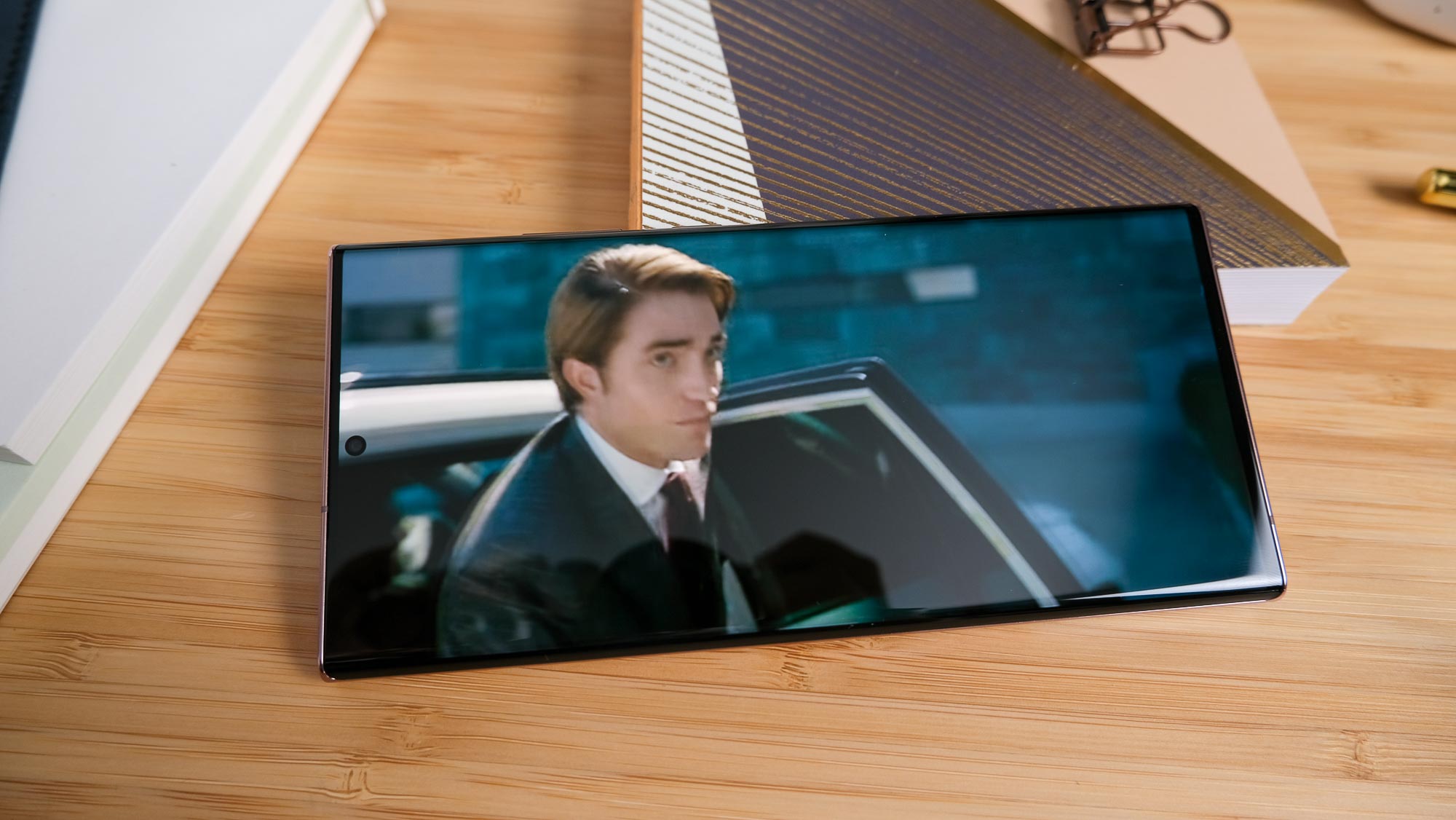
Using the Galaxy Z Fold 2 will be quite a different experience from a phablet like the Galaxy Note 20 Ultra, though. The bigger display on the Fold lets you multitask, running as many as three apps at the same time. App Continuity on the Galaxy Z Fold 2 means you can start using one app on the exterior screen, before opening up the phone to pick up where you left off on the main display. Because the Fold 2's cover display is bigger now, you can resume using that screen when it's time to close up the foldable phone.

The Galaxy Z Fold 2's display also lets apps take advantage of the extra screen real estate. Open an email on the foldable phone, and you'll still be able to see the contents of your inbox while reading the message. On the Galaxy Note 20 Ultra, it's more of an either/or view.
Both Samsung phones offer 5G connectivity, thanks to the modem that comes with the Snapdragon 865 system-on-chip. And both the Galaxy Note 20 Ultra and Galaxy Z Fold 2 work on all types of 5G networks, including Verizon's high-speed mmWave-based network.
Galaxy Note 20 Ultra vs Galaxy Z Fold 2 battery
The Galaxy Note 20 Ultra and Galaxy Z Fold 2 don't just share a mobile processor, they also have the same size battery at 4,500 mAh. (Of course, in the case of the Z Fold 2, the battery is split up into two distinct power packs.) That bodes well for the battery life of the foldable, as the Note 20 Ultra fared well on our battery test, which involves continuous surfing over the web until the phone runs out of power.
When we tested the Note 20 Ultra, the phone endured for 10 hours and 26 minutes on our test. That's just ahead of the average for smartphones. One caveat about that result, though — it was with the Note 20 Ultra's screen set to a 60Hz refresh rate. When we enabled the 120Hz rate, battery life fell dramatically, with the Note 20 Ultra lasting a little less than 8 hours on our test.
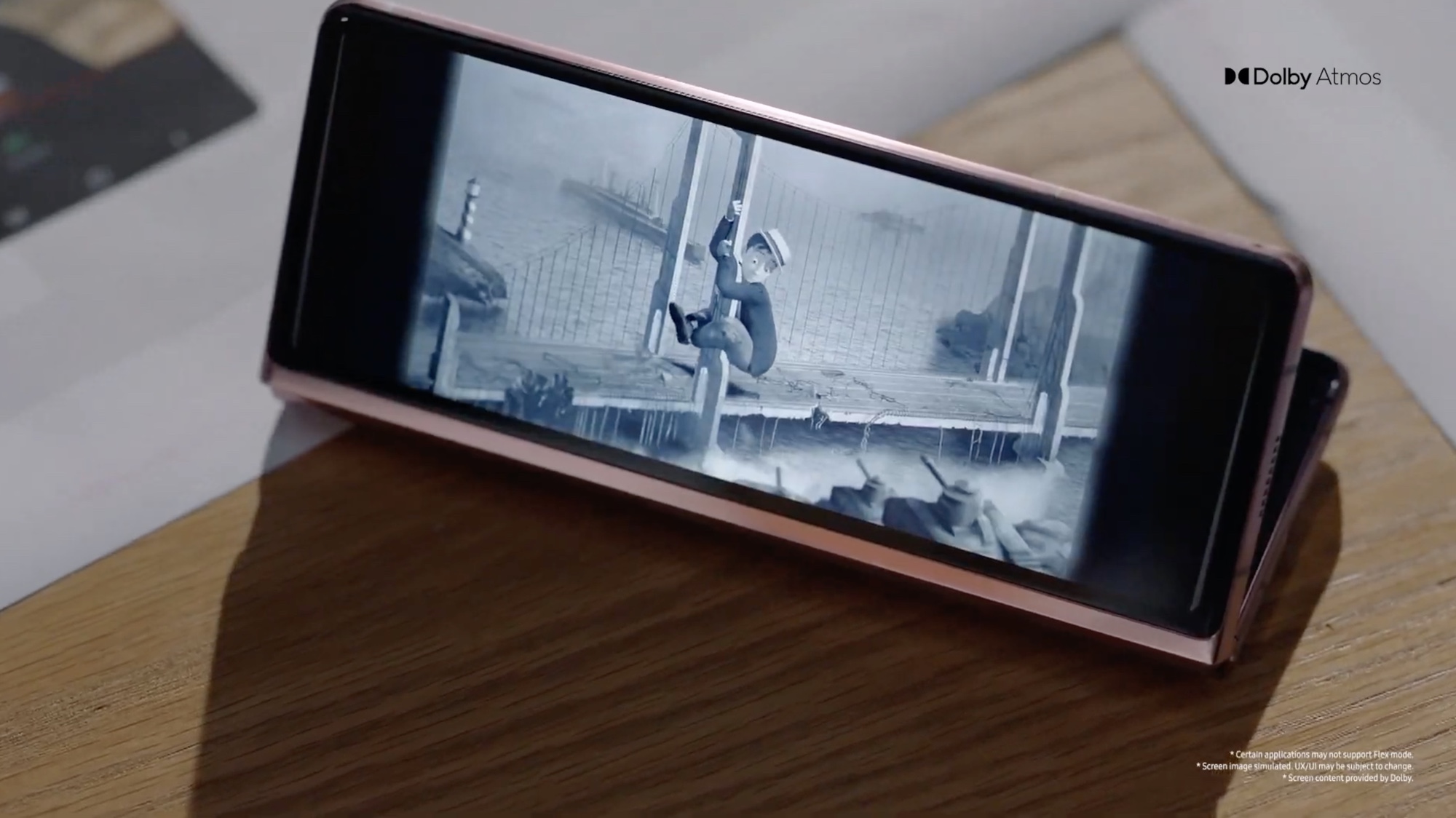
The Note 20 Ultra ships with a 25-watt charger. That helped us get a drained phone back to 56% after half-an-hour of charging. The Z Fold 2 also supports 25W fast charging, as well as fast wireless charging and PowerShare reverse charging.
Galaxy Note 20 Ultra vs Galaxy Z Fold 2: Special features
The Galaxy Z Fold 2 and Galaxy Note 20 Ultra may both come from Samsung and run the same version of software — that's Android 10 using Samsung's OneUI interface — but they offer users two very different mobile experiences.

For the Note 20 Ultra, it's all about the S Pen, the stylus that accompanies every Note phablet. For this iteration, Samsung has improved responsiveness, with latency reduced down to 9ms for the Galaxy Note 20 Ultra. (S Pen latency is 26% for the standard Galaxy Note 20, so that's a big edge for the larger of Samsung's two phablets.) The S Pen also builds upon the gesture-based controls added in previous years with new navigational gestures and improved accuracy in converting handwritten notes into text.
As we mentioned, the Galaxy Z Fold 2 supports features like multitasking and App Continuity. It's also picked up the Galaxy Z Flip's Flex mode feature. That allows you to use different parts of a partially opened foldable screen for different purposes. With Google Duo, for example, your chat window appears in the upper half of the screen, while you control the chat and add more participants from the bottom half.
Galaxy Note 20 Ultra vs Galaxy Z Fold 2: Outlook
The Galaxy Note 20 Ultra uses a tried-and-true design for anyone who wants to stay productive when they go mobile. With the Note 20 Ultra, you get a big screen capable of a 120Hz refresh rate, powered by the fastest processor available for Android phones. Throw in the S Pen — always the highlight of any Galaxy Note release — and you've got a very capable device.
Now that we know more about the Galaxy Z Fold 2, it seems like Samsung has taken a big step forward from last year's foldable. The Z Fold 2 makes a better case for how a foldable screen can increase productivity. Whether that's enough to take foldable devices mainstream remains to be seen.
The Galaxy Note 20 Ultra is the safer pick at this point, but there's plenty of intrigue surrounding the Galaxy Z Fold 2 that we hope to clear up once we have a chance to test Samsung's new phone.
Philip Michaels is a Managing Editor at Tom's Guide. He's been covering personal technology since 1999 and was in the building when Steve Jobs showed off the iPhone for the first time. He's been evaluating smartphones since that first iPhone debuted in 2007, and he's been following phone carriers and smartphone plans since 2015. He has strong opinions about Apple, the Oakland Athletics, old movies and proper butchery techniques. Follow him at @PhilipMichaels.

